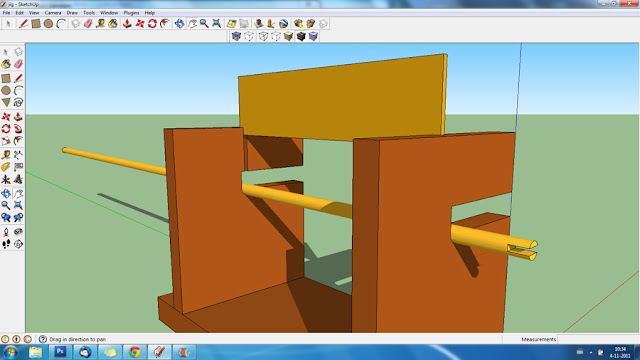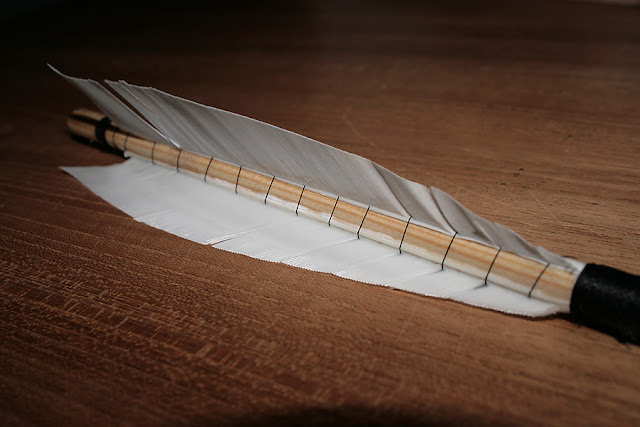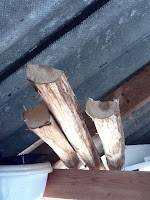After I finished a few flatbows from maple and hazel it's time for a new challenge, making some tradtional arrows . First I needed some wooden shafts, straight and approx. 30 inches long. My brother is a pigeon fancier and he uses these shafts to divide the pigeonhouse into sections for breeding.
I got a few nice and straight pieces and cut it to the exact length:
 |
| straight wooden arrow shafts |
There were also a few nice pigeon feathers that looked promising, so I took them as well. On my way home I realised that there is a poulterer in our town, so I went to his hangar. When I asked for some large feathers he got a box full of goose feathers, but they were a bit battered, so I could only use a few. Then he went to another room and came back with a complete swan wing!
When asked how much for it, he said I could take it for free if I showed him the result of the arrow build. Thats a nice deal!
 |
| complete swan wing for arrow feathers |
The wing was in a beautiful shape and there were 20 to 30 feathers perfect for arrow making. First I cut some arrows and split them in two halves. Then I used a sharp hobby knife and cut them in the final shape:

Before glueing the feathers to the wooden shafts I neede some kind of fletching jig like this:
I googled around and found some tutorials on how to build your own fletching jig with basic materials. First I made a 3d model in Google Sketchup to get the correct sizes of each piece.
The jig consists of two pieces of wood with a groove to hold the arrow horizontally. There's a groove on both inner sides, so you can slide in two pieces of plywood which holds the feather.
 |
| 3d model of the arrow fletching jig |
 |
| the plywood holds the feather and slides down on the shaft |
It took me an hour to make this jig from some scrap pieces of wood. The lines you see on the jig are there to align the feathers at an angle of 120 degrees, so they are distributed evenly around the shaft.
 |
| the pencil lines show the correct angles of the feathers |
 |
| the first arrow being fletched |
After a few minutes the first few feathers were glued on the shaft with superglue:
I used some black thread to decorate the arrow in a medieval style:
 |
| fletched arrow with thread in a medieval style |
 |
| diy medieval english arrow |
My neighbour is going to make some arrowheads, so I will show you the finished arrows soon.
Any questions? Just let me know
Kind regards, Mark
info@storm3d.com









































